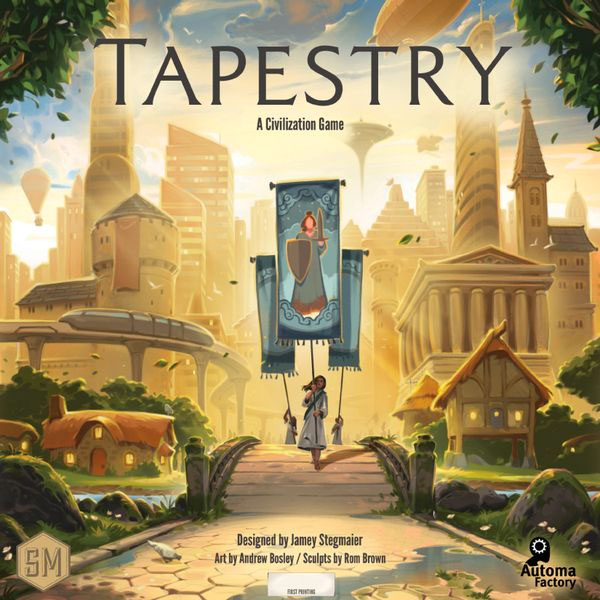Favourites from my collection
#3 Tapestry
Tapestry is the second from Stonemaier Games in my top five, and once again, for me, it is beautifully presented. The board is vibrant and evocative of exploration, the art is sublime, the frosted texture used throughout, from the player boards to the rulebook, is not only highly functional but wonderful to the touch. And the sculpted buildings. They are fantastic. Tactile, brilliantly made and ‘wow’ features to the game are just three of the ways I can describe them.
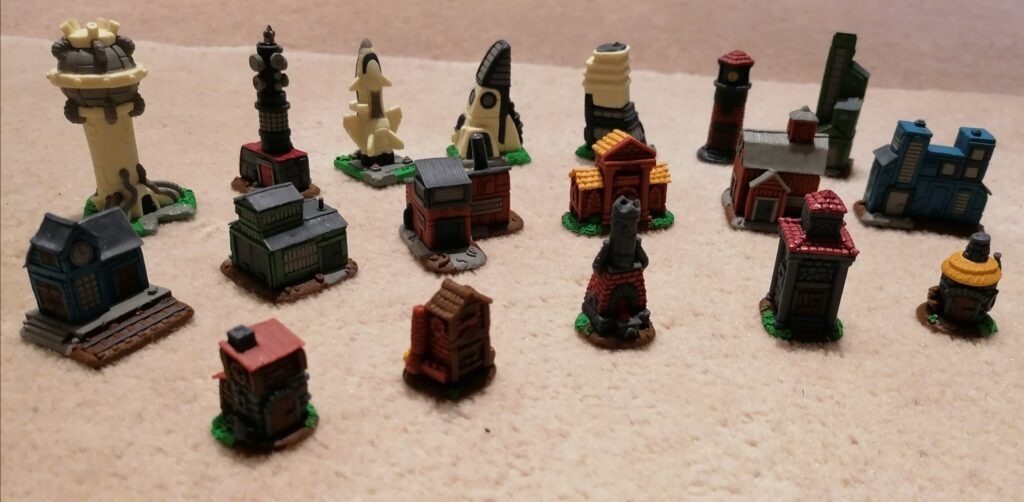
One part to this game that has been argued over throughout the hobby is the theme. Or rather, how it describes itself. A civilisation game. To a lot of people, this means exactly what it says. But to some people, labelling something as a civilisation game creates a preconception. An expectation that this game will be a wildly thematic game which throws you in to the role of running a civilisation, ordering forces to attack a nearby enemy garrison, building up a prosperous empire, dealing with politics, civil unrest and so on. This kind of expectation has been established by games like Sid Meier’s Civilisation and the Total War series. Jamey Stegmaier’s design here, while representing these things, does so in an abstracted fashion. For me, this does not detract from the game, but for some people, because they had this idea in their head about what the game should be, it did.
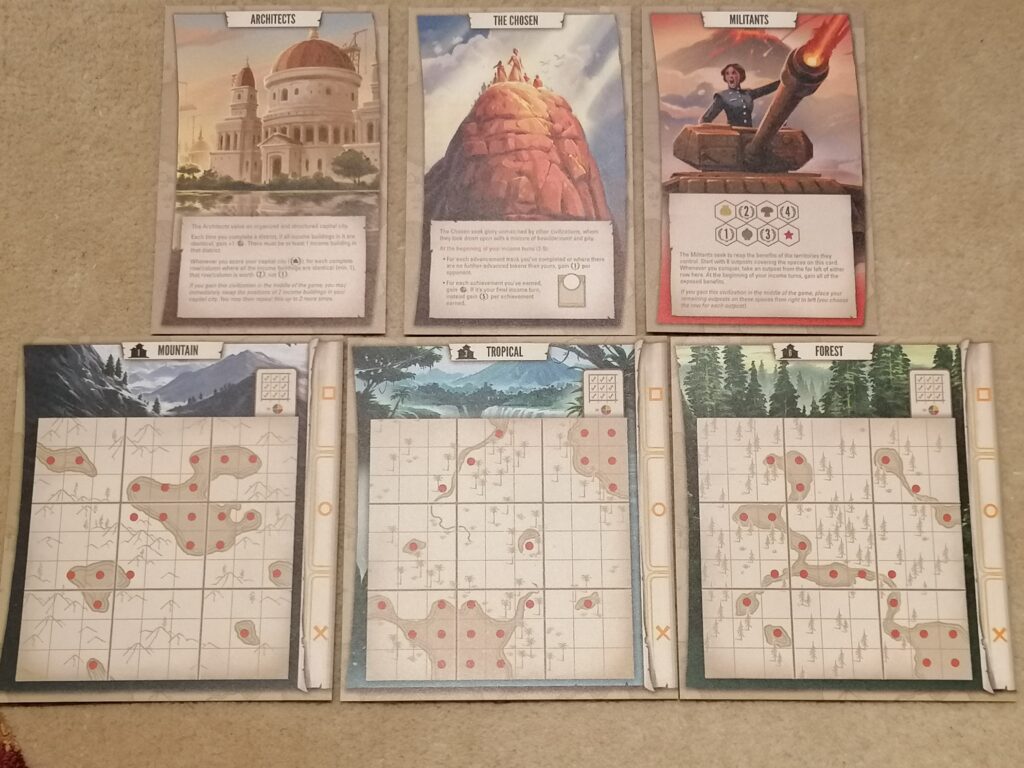
In Tapestry, you play one of numerous different civilisations trying to build their empire by advancing on tracks, and amass the most points. Each civilisation is very asymmetric, meaning that with each different one you select, you’re encouraged to play in a new way. From the examples shown above, a player playing as The Chosen will want to focus very heavily on one or two tracks to make sure they are ahead, plus they will want to complete achievements quickly, whereas The Architects will want to concentrate on getting buildings into their capital city, and aligning them so that the same types are positioned to benefit them most. Your capital city introduces some interesting ‘Tetris-like’ play, where you will try to place buildings (both the ones on your own player mats, known as ‘income buildings’, and the sculpted ‘landmark buildings’) to complete 3×3 grids to gain more resources, and rows and columns to receive points. The part that makes this an interesting puzzle is the red dots on these mats, positioned differently depending on which mat you have. These are blocked spaces, and for the most part, you cannot place anything on these. This isn’t a problem with the income buildings, as they only take up one space, but the landmark buildings are larger, so you will need to think about where you can fit these. You can place them so that they’re partially off the mat, but ideally this is a last resort.
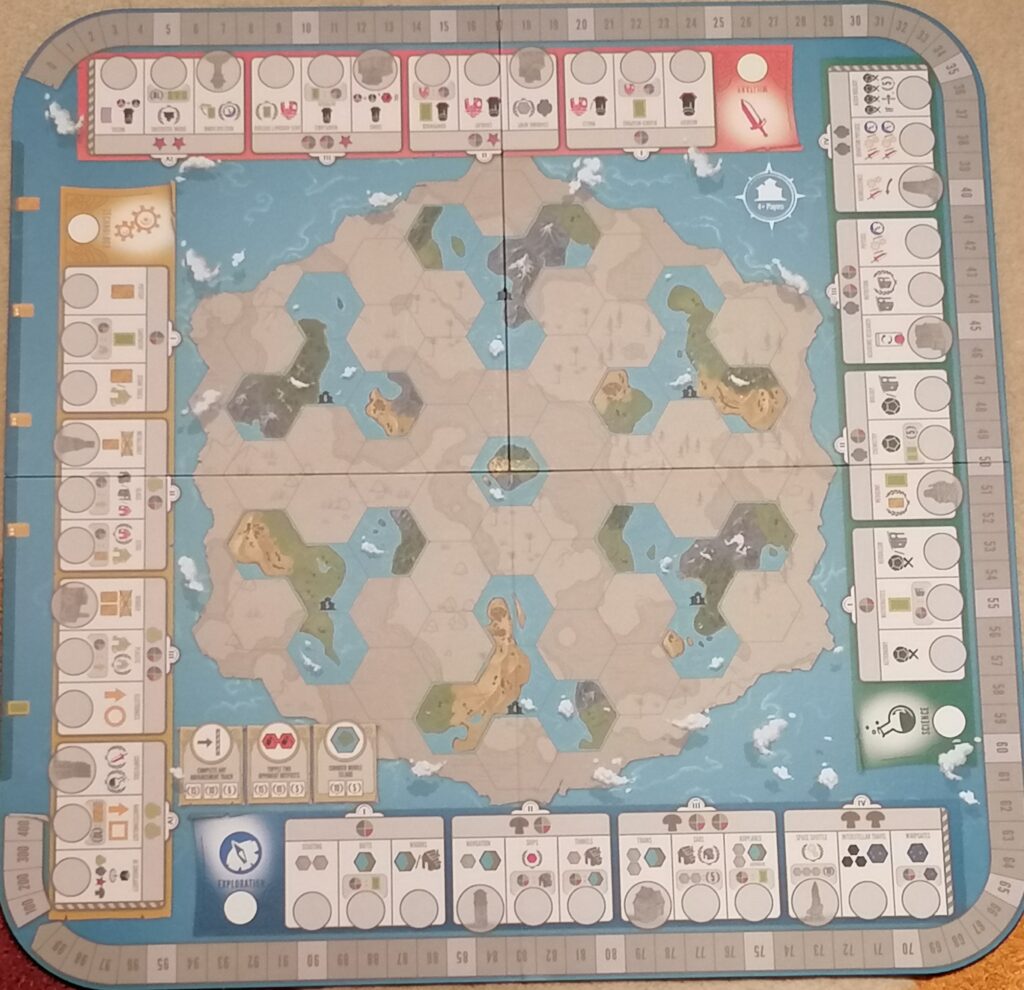
Turns are very simple in this game. Most of them will be ‘advancement’ turns, where you pay one or more resources to advance on one of the four tracks surrounding the board, and then perform the associated action. They start off fairly low key; pick up a card or take some map tiles for example, but as the actions become more expensive, they become more powerful, and before you know it you’re exploring space or using your scientific developments to advance on other tracks, enabling you to perform even more actions. A lot of the actions also come with optional bonuses, where you’ll need to pay something to gain something beneficial. I really enjoy the freedom of choice you have with these tracks. Do I focus entirely on one, or commit to all of them, or just a couple? Which one(s) do I choose to go for? Which is the best one to go for at this specific point in the game? If you wanted to, even without considering the civilisation abilities, you could play vastly different games each time you bring this to the table.
Another big part to the tracks are the landmark buildings. Each time you are the first to advance into a new tier (tiers are groups of three action spaces) of a track, you will receive a specific landmark, dependent on which track you’re advancing on, and into which tier you’re advancing. Tier two buildings are all 2×2 size, but then as you get to tiers three and four, the buildings will get bigger, and the shapes will change. Not only does this add to the puzzle of the capital city, it also introduces a nice race mechanic to the game, one that again, gives you plenty of options. If you just want to shoot ahead on one track to get all of these landmarks, you can. If you’re one space away from getting one, but no one shares that space with you, you can afford to wait and commit yourself you other tracks, at least for one turn. If someone does share your space, do you feel like you can press your luck and go for another option, or should you not risk it and claim it as soon as possible?
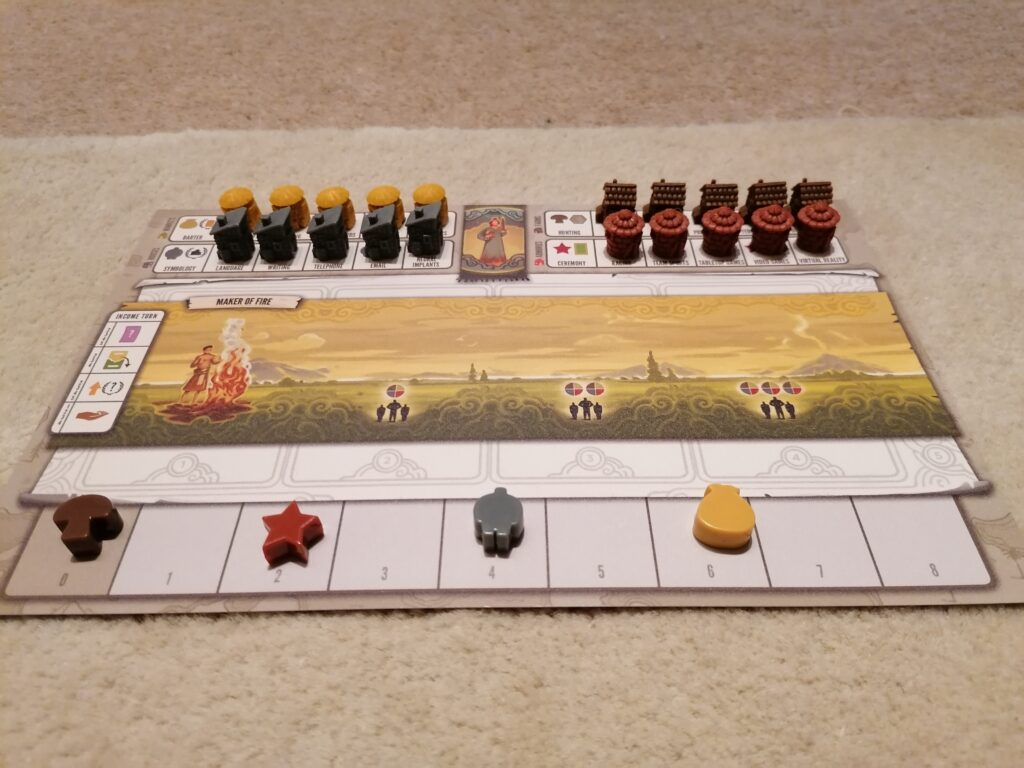
The second type of turn you will take in Tapestry is an ‘income’ turn. You can choose to take this at any point, and sometimes it is worth it, as if you do before the players to your left and right, you gain one or more extra resources of your choice, dependent on what ‘era’ (round) you are in. Essentially this is the time when you will replenish your resources, score points, and utilize your civilisation’s special ability (again, dependent on which era you’re in). On the left-hand side of your player mat is a flow-chart of what you will do on your income turn and in what order you will do them. From top to bottom, the symbols mean that you will use your ability, then play a tapestry card. Next you will upgrade technology cards and gain points, and finally you will gain resources. The points and resources you gain will be dependent on what you have uncovered on your player mats in the income building section. The first spot on each row is always uncovered, but here is the biggest reason you are encouraged to place income buildings, rather than focusing entirely on landmarks.
Yet another part of Tapestry I find intriguing is that you and your opponents can be playing in different eras, and you can even end your own game before someone else is finished. You don’t need to sit and wait for the other players to finish their era before you start taking actions again, which makes the game flow nicely. As I said, it might be better to move on to the next one early, as you will get those extra resources, on top of what you produce, and what you have potentially saved up, but it may also be beneficial to try to take one more action before you move on. There’s plenty of opportunity for you to make it worth your while to make your eras last as long as possible.
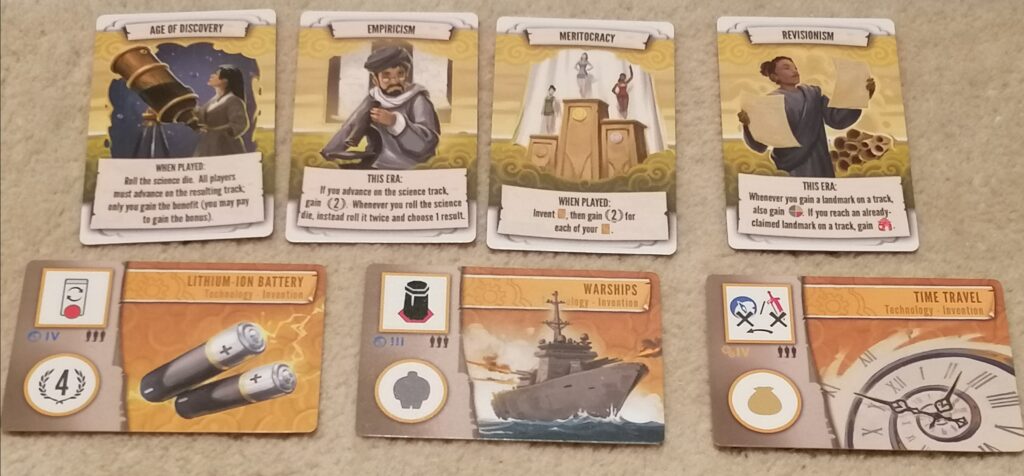
I’ve mentioned two types of cards. Technology cards represent different discoveries, developments and advancements in this world, ranging from batteries to time travel. When you take one of these cards, you’ll place them next to the cross symbol at the bottom right of your capital. Advancing them means that you’ll move them up to the next symbol up, either from the cross to the circle, or from the circle to the square. As you move them up, you will receive a bonus. As an example, when you move the time travel card up to the circle, you will gain a money resource, and when you move it up to the square, you can move back on either the exploration or military track, without gaining the action. However, there is a prerequisite to advancing to this step, on all technology cards, shown underneath the square. In this example, either you or your neighbouring players will need to be in tier four of the technology track. These prerequisites, though small, do add a nice touch of theme to these cards.
Tapestry cards, played when you move into a new era, will again, give you a boost. They’re mostly separated into ‘When Played’ cards, which will give you a one-time bonus, and ‘This Era’ cards, which will give you an ongoing bonus until you move on to the next one. I have always argued that it is about how you use cards which have been randomly drawn, and that if you have not necessarily drawn the card that will help with your ongoing strategy, you should switch your strategy slightly to accommodate the card. This is no different in Tapestry. Paired with the fact that I don’t think that these cards can make or break your game, and that there are plenty of opportunities to gain more, I don’t have any problem with these cards. Some disagree with me, claiming that not getting a ‘good’ card from this deck will ruin, or at least harm, their strategy. It is an assertion that I can understand.
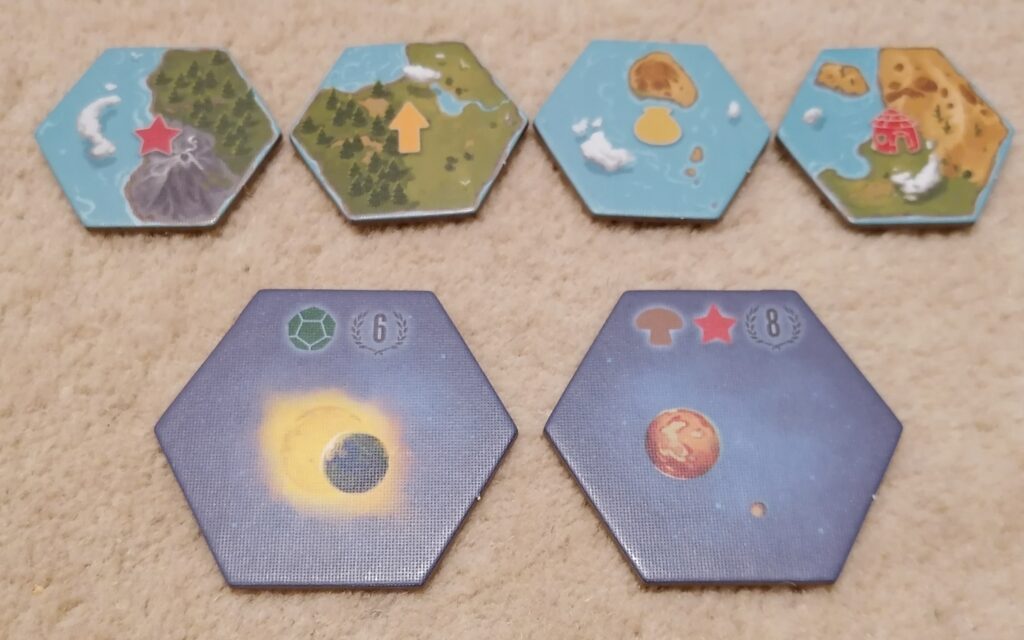
By far though, the biggest reason that Tapestry has earned mixed reception throughout the hobby is questions about the balance of the civilisations. The complaints lodged by some is that some civilisations are far more powerful than others. Now, I haven’t played this game anywhere near enough to make a convincing argument on this, but I doubt that many of the people complaining have either. Jamey Stegmaier has held his hands up here, acknowledged some issues, and, using data submitted by the public, detailing various information, Stonemaier Games have issued adjustments to the civilisations. I for one think this is a great thing, not only for someone to admit an error, but to take actions to resolve it. We’re all human, and these things can happen. And based on the fact that there have been no further adjustments issued, I would assume that they have worked.
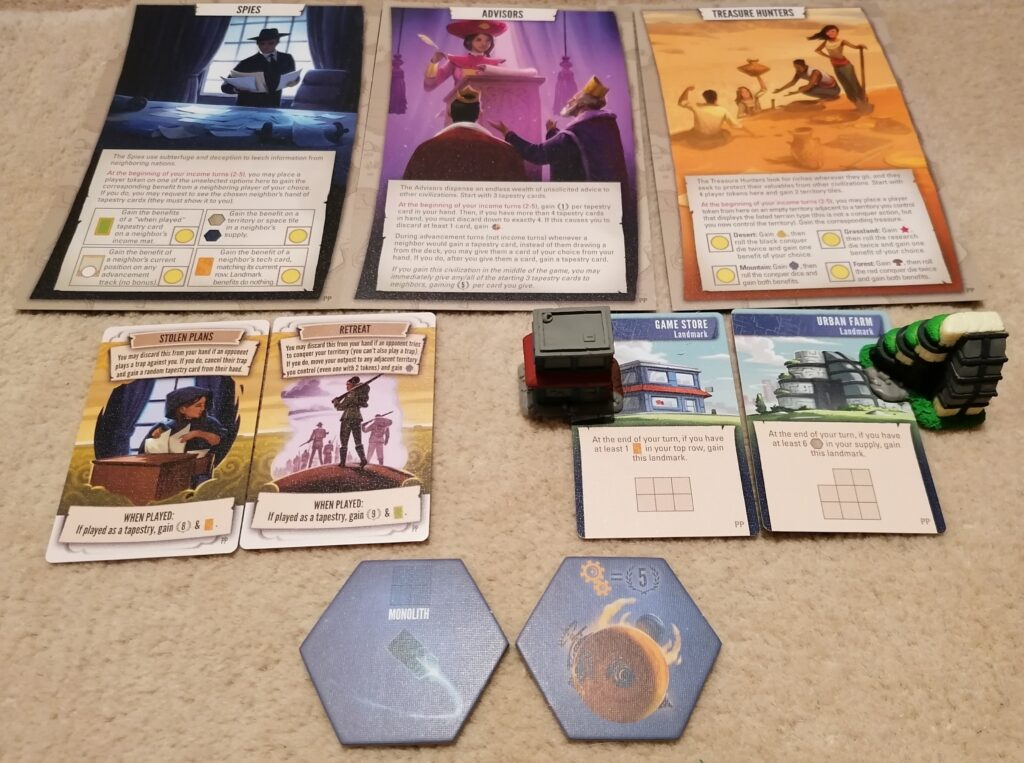
There is currently one expansion for Tapestry, called Plans and Ploys. I haven’t played it, but I acquired it this past week, as the additions seem to me like they will only improve a game I already adore. Along with new civilisations, more Tapestry cards and new space tiles, there are more sculpted landmark buildings, which are just as beautiful, and now each player will receive a starting landmark, which they can place on their capital once they have completed a requirement on the card for it. Though I enjoy the race for landmarks, I feel like this adds even more options to the game, and if you feel like you’re constantly being beaten to the landmarks you want, at least you have this, which no one can take from you.
Tapestry is a game that divides opinion. Amongst my gaming group, of those who have played it, two are either indifferent or dislike the game, whereas I love it, and it is one person’s favourite game of all of our collections. As I’ve said in the past, not every game is for everyone, and that’s fine, but I recommend this game highly to anyone who feels like it could be for them.
| Prices delivered by BoardGamePrices | |
|---|---|
 | Tapestry £60.58 with shipping, in stock! Buy now See all 44 offers! |

